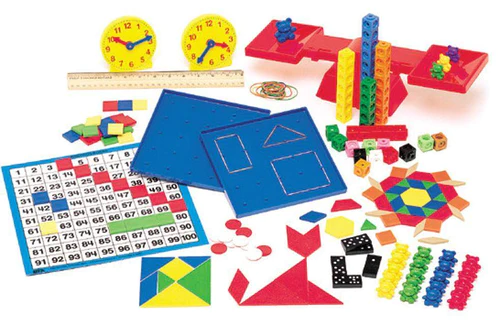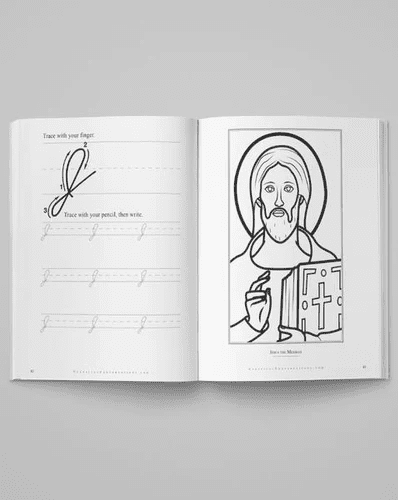Most homeschooling families start formal education with their littles using a kindergarten homeschool curriculum. But as you may know, there’s no shortage of curricula out there to choose from. So, how do you choose the best curriculum for your youngsters? What exactly should such a curriculum focus on?
3 Things to Look for in a Kindergarten Homeschool Curriculum
During these early years, students are naturally so curious about the world and able to memorize and retain large amounts of information.
This makes kindergarten an ideal time for laying the foundational knowledge in three areas, so they develop skills essential to succeeding later in school, college, careers, and all areas of life.
Not surprisingly, these areas are reading, math, and handwriting. Your kindergarten homeschool curriculum should focus on developing the basic knowledge and skills related to these fields.
What is shocking, however, is how much debate and controversy these three areas can generate, which makes choosing a kindergarten homeschool curriculum all the more difficult.
Should reading instruction be whole-language or phonics-based?
Should math instruction follow traditional models or embrace the “new math”?
Should students invest time in learning cursive?
We’ll address each of these debates below to help you understand exactly how to choose a kindergarten homeschool curriculum that works for your family.
1. Reading: Phonics-Based vs. Whole-Language
The traditional kindergarten homeschool curriculum for reading is phonics-based.
After decades of watching public school experiments with whole-language reading instruction and the following drop in literacy rates, most homeschooling families are turning to traditional phonics for reading instruction.
The phonics-based method starts by teaching young children all of the possible sounds made by consonants and vowels. Then students progress to letter combinations like ch, th, and sh and vowel combinations like ea, ei, and ou. After this step, students are introduced to short words and sentences with increasing complexity.
While students are learning to read short words and simple sentences, parents should also expose them to more complex language by reading aloud books that are above their students’ actual reading levels.
If you decide on a phonics-based approach to reading, you may find it helpful to look for a kindergarten homeschool curriculum that includes pre-packaged read-aloud books. Or, you can find your favorites at the local library or bookstore.
Resources for Learning Phonics: American Language Series
Listening to audiobooks is another great way for your children to process more complex language. Still, it’s important to spend focused time each day—one hour at a minimum—reading aloud to your children. It will do wonders for developing your children’s learning skills.
As reading aloud becomes a common practice in your household, your children will gain a richer vocabulary and understanding of language that will enable them to communicate better both in speech and writing.
And, as an added bonus, your children will have plenty of time to practice sitting still and focus on listening if you spend an hour a day reading aloud, which are undeniably necessary skills in all areas of life.
Resources for Reading Aloud: Copper Lodge Library
2. Math: Traditional Model vs. “New Math”
In the 19th century, mathematics instruction in the United States focused on memorizing addition, subtraction, multiplication, and division facts.
Now, most elementary math texts introduce word problems and even algebraic equations at ever-younger ages. Fortunately, you don’t have to worry too much about the debate between the traditional model and what’s known as “new math” when choosing a homeschool curriculum for kindergarten. Rather, there are basic skills every kindergartener needs to master that your curriculum should focus on developing.
First and foremost, a kindergarten homeschool curriculum should teach your littles to practice the basics of arithmetic. That is, counting, adding, and subtracting.
Resource: Saxon Math Kindergarten
For more specific goals, your students should be able to count to 100 by the end of the year as well as be able to add and subtract single-digit numbers using math manipulatives. Math manipulatives are any objects that can be counted, including household items like dried beans, raisins, apples, and money. You should work with your children to add some beans (addition) and take some away (subtraction).
Resource: Saxon Math K–3 Manipulatives

Counting, addition, and subtraction are the foundational knowledge of math. So, whatever kindergarten homeschool curriculum you choose should focus on having students practice these skills.
Also, it’s important that students learn to write numbers, most importantly the numbers 1-20. This is both an essential handwriting exercise and a crucial skill to perform well in higher-level math in elementary grade levels and beyond.
Other math skills you may want to help your students develop at this early age are working a calculator, recording the weather, and telling the time.
3. Handwriting: Cursive vs. Print
Finally, a kindergarten homeschool curriculum should include handwriting practice.
Young students should learn to hold the pencil correctly and form their letters carefully. For a time, educators felt that it was no longer important to teach cursive handwriting to students. They argued that cursive was no longer needed because students could move straight from printing letters to typing letters.
However, more recent studies have shown that there are two important reasons to continue to teach cursive. First, cursive writing engages the right side of the brain as well as the left. Second, studies have also shown that college students retain information better when they write rather than type. And masters of cursive can often write much faster than in traditional print.
In any case, nearly every kindergarten homeschool curriculum will include daily practice with manuscript (print) handwriting.
This is to be expected. If a kindergarten curriculum you are considering does not have handwriting practice, find another option.
By the end of the kindergarten year, students should be able to copy whole sentences with proper punctuation and capitalization. All this practice will not only make your student’s handwriting readable and attractive, but it will also help to develop their fine motor skills, learn how to spell, and eventually craft sentences of their own.
Also, you may want to search for a kindergarten homeschool curriculum that includes coloring time (or add it on your own) so your students can continue to develop their fine motor skills in a more creative exercise.
Resources for Learning Cursive: PreScripts

Related Blog: “A Little Cursive Story”
The Best Kindergarten Homeschool Curriculum
A word of caution for parents: young children learn best with hands-on activities demonstrated by loving adults, not screens.
Our littlest learners need in-person interaction and attention in order to develop into capable, lifelong learners. Although online options can be useful in specific contexts, online-only programs may be hindering your kindergarten-aged students from learning naturally. Sure, they may offer convenience, but they lack the hands-on practice and in-person connection your children need.
That being said, if the kindergarten homeschool curriculum you choose focuses on anything, it should be on teaching the basics of reading, math, and handwriting through a hands-on, child-directed approach.
Still, homeschooling is all about finding what works for your family and customizing your curriculum to suit your needs. So, if you have additional time within your days to include other subjects, go for it.
Don’t let the curriculum you choose tie you down!
The Foundations Program and Scribblers at Home
If you’re searching for a kindergarten homeschool curriculum, then you may be interested in the Classical Conversations Foundations program or Scribblers at Home: Recipes from Lifelong Learners.
Foundations is our program for students ages four and up that, as its name suggests, focuses on laying the foundational knowledge for students in key subjects. It consists of a comprehensive curriculum, helpful resources, and a local community of other homeschooling families all enrolled in the program.
Scribblers at Home, meanwhile, is an engaging at-home resource for you to work through with your littles ages 4–8. Whereas Foundations emphasizes community, Scribblers at Home is home-centered—perfect if you’re looking for activities to spark a love of learning or if you just want to dip your toes into homeschooling!
Resources: Scribblers at Home and Foundations 5th Edition
We wish you all the best in your search for the best homeschool curriculum for your littlest learners!





